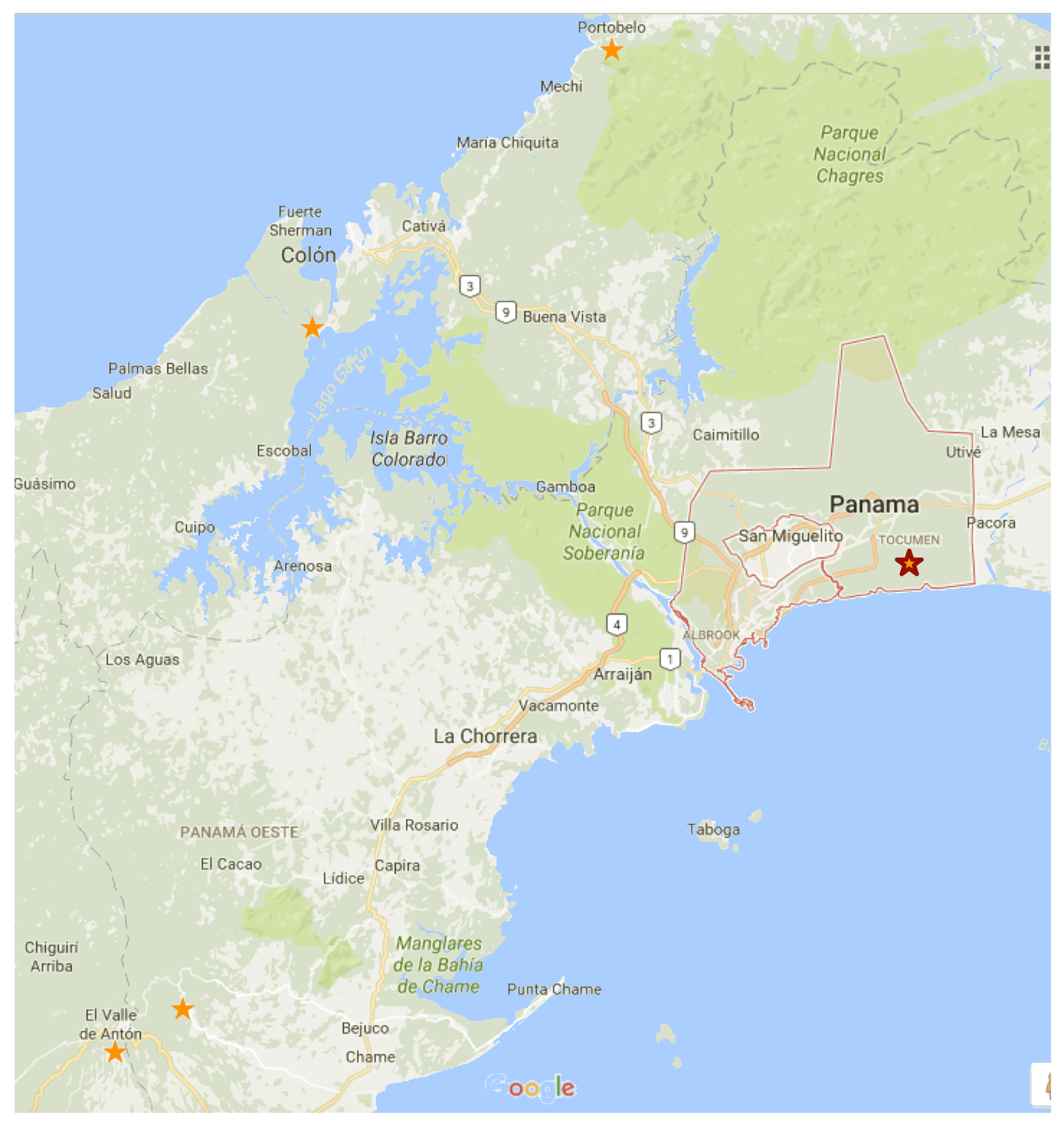A confusing thing about Panama for North Americans... is that the country runs east-west rather than north-south. If you want to drive from Panama City to the United States, you need to go west. If you go north, you will cross the continent at its narrowest, along the canal. If you go west, you're heading towards Colombia. If you go south, you are swimming in the Pacific Ocean.
It's worth knowing that the country of Panama is simply Panama. Panama's capital, Panama City, is Panamá.
Panamanians speak a particularly challenging Spanish. Words blur together, and some sounds are dropped or pronounced depending on context.
The Balboa is the currency in Panama, but it is the same as the US Dollar.
Tocumen International Airport.
The international airport is pretty cozy, a bit less than an hour from the city. You can take busses. Special city busses require a special city bus card, which you cannot get at the airport. Other busses are usually more crowded, and take only cash (dinero en efectivo). You probably want to go via Corredor Sur, the toll-highway in the city. These busses cost $1.25. Local buses cost only $.25, but you may hit a bit more traffic winding through the neighborhoods.
It can be hard for a foreigner to find a taxi for less than $30, and they will try to charge you more for more people. Uber is a new thing and works pretty well, and there's even free WiFi in the airport lobby. The problem with Uber and taxis is convincing your driver to take the much faster Corredor Sur, because your driver has to pay the toll, and you probably didn't know it was even an option.
If you end up needing to crash near the airport, try the Riande Airport Hotel and Casino. Its not the cheapest place, but its minutes from the airport and offers an anytime shuttle service.
El Cangrejo
This is a trendy area of Panamá, with lots of international restaurants, casinos, and prostitutes. Its quite popular among tourists, in fact the most popular area according to booking.com. The area is not particularly clean, and heavily trafficked except for Sunday morning. During the high season, January-March, it can be quite expensive. As April rolls by, though, its not so bad.
I was not really impressed with the food here, perhaps because its geared towards short-stay tourists. I also don't like being bothered by everyone soliciting sex or taxi rides. You will generally be yelled at when you leave your hotel... by a hotel serviceman trying to connect you with a hotel-arranged taxi. I recommend hailing your own taxi, and never one that is waiting for you or trying to pick you up before you have hailed it. Uber works, too.
From pretty much anywhere in Cangrejo, it's just a stones throw to the metro line. But it's a bit further to the water and other points of interest. Hotels have big pools on their roofs, and lovely views of the city. There is a great bakery just across from the Veneto Hotel. Try the lulu smoothie, a fried plantain, and the special spicy salsa.
Panamá skyline, from a hotel rooftop in El Cangrejo.
Albrook Station
From Panamá, you can go east through Darien towards Colombia, north along the canal towards the Atlantic, or west over the canal towards Costa Rica and (eventually) the United States. Regional buses go in all these directions, leaving from the Albrook Gran Terminal Nacional de Transporte. You can get to Albrook station on any bus that says "Albrook", or on the metro.
The station is a mess. Bus schedules and departure gates are poorly organized. Find a kiosk in the terminal with the name of the place you are trying to go. Buy a ticket, and listen carefully to which departure port your bus will leave from. To get to your port, however, you need a special transit card to pay the ten sent departure tax. Someone will collect your ticket and you will get in a bus, or van, or some combination. Most likely, you'll wait a little bit for your vehicle to fill up. It can be smart to double-check that your destination is listed on the placard visible from the front of the bus.
Once your on the road, heading west, enjoy brief views of the canal as you pass over it. Do not be surprised when your bus slams on the breaks to pick up a new passenger. These passengers wait beside the highway with their heads craned the side, trying to figure out if your bus is going wherever it is they want to go. The bus will slow down for them if they wave soon enough. They might run alongside the bus a few strides before jumping on.
Los diablos rojos - red devils - are US school busses converted into Panamanian public transportation.








